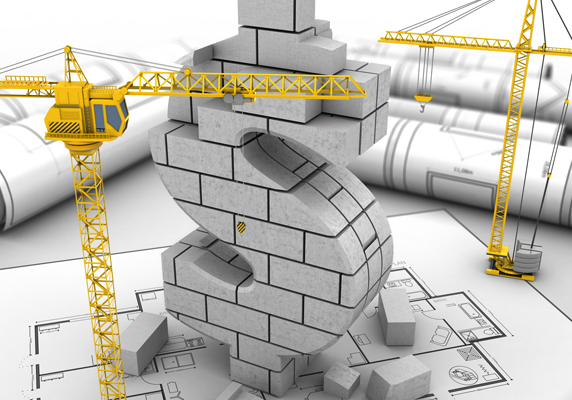
 Rebuilding credit has a lot of misconceptions around it. One of these common myths is that it’s hard to do.
Rebuilding credit has a lot of misconceptions around it. One of these common myths is that it’s hard to do.
The truth is that with the right strategies and steps, fixing a bad credit score is a lot easier than you might think!
The trick is knowing what to do and in what order. If you try to rebuild credit in the wrong order, it will be much more difficult.
Here’s an example – one way to rebuild credit is by practicing good credit habits, such as paying your bills on time every month. So, sometimes people will hear this and then resolve to start paying their bills by the due date.
While this is a great habit to build regardless, they don’t see the results they expect – their credit score does not immediately go up.
What’s going on? The problem here is that if this person is still carrying lots of debt, no matter how well they perform their “good credit” habits there’s only so far that their credit score can rise. They need to work on improving their problem debt situation at the same time as they build better payment habits.
These are the simplest and most effective steps to take to rebuild credit quickly:
- Step 1: Get Rid of Bad Debt
As we mentioned, bad or problem debt can really drag down your credit score. And even if you make improvements in other areas, if you’re still carrying “bad” debt, it will be difficult to rebuild credit.
What is “bad” debt? This is defined as problem debt – normally unsecured debt like credit card debt, payday loans, or a line of credit with a high balance. (If you can’t pay the balance in full each month, this is typically considered high.)
“Good” debt, on the other hand, is considered your mortgage, car payment, a secured personal loan, student loans — something that has a longer-term fixed payment plan that you’re not expected to pay off right away. It’s worth noting though that if you’re having trouble meeting your “good” debt payments, then even your good debt can become problem debt.
“Bad” debt usually does not have a fixed payment plan that you can pay in installments. (For instance, your credit card provider doesn’t give you an installment plan to pay off your balance — they want the money all at once, or they will charge you interest.) The longer you carry a balance on this debt, the more you end up paying in interest.
Debt that has gone into default (you’ve missed a payment or multiple payments) is also considered “bad” debt.
To deal with problem debt, you need a plan to get rid of it. This could include:
- Paying it in full if you have the funds available or managing your budget to find the funds through strategies like the debt snowball method.
- Consolidating debt through a consolidation loan or a secured personal loan. You pay off your outstanding high-interest loans and then have only one payment on a fixed, monthly schedule.
- Refinancing your mortgage and using the equity to pay off your debts.
- Filing for insolvency – a consumer proposal or bankruptcy – which eliminates your unsecured debts but leaves you with a bruised credit score. However, if this is your only available method of dealing with your debt, it can be worth the cost.
Whatever method you choose will depend on your unique situation.
- Step 2: Work with a Lender Who Won’t Take Advantage of You
Many of the debt consolidation methods above involve working with a lender. If you want to take out a consolidation loan, you need to work with a lender. If you want to refinance your mortgage, you need to work with a lender.
Even if you want to manage your budget better, a lender can help you find ways to do that.
If you want to file for insolvency, you will have to work with a Licensed Insolvency Trustee (LIT). However, a lender can help you decide if this is truly the best option for your situation and work with you to proactively rebuild credit even while you are in the insolvency.
But there is one important consideration here – the lender you choose has to be reputable.
Some lenders take advantage of people trying to rebuild credit by charging sky-high fees or interest rates.
When you are considering lenders, make sure you look at:
- How long they have been in business. Lenders who have been in business longer are typically more experienced and reputable.
- If they have a physical location or are online only. Typically you want to work with a lender who has a physical address that you can visit to make sure they are legitimate.
- If they charge an up-front fee for their services. This is a red flag.
- Step 3: Work with a lender who reports to the credit bureaus
Similarly to working with a lender who won’t take advantage of you, you also want to make sure that the lender you work with reports to the Canadian credit bureaus.
This is a crucial step for rebuilding credit. Not only will this show the Canadian credit bureaus that you are paying down debt, but it will also help re-establish your good payment habits as long as you pay your bills in full and on time.
Make sure that the lender you work with is reporting your payments.
- Step 4: Manage future credit responsibly
This goes back to the “good credit” habits we talked about earlier. During and after your loan are the most important times to:
- Pay bills on time
- Pay bills in full
- Not take on too much credit
- Resist letting problem debt creep back up…
Rebuilding credit is easy to do, but it requires a shift in mindset. In the long-term, it’s vital to live within your means and not make purchases you can’t afford — or if you do need a higher-ticket item, to look for sustainable financing options.
A good credit score helps in a lot of ways. And you can achieve one.
Prudent is here to help rebuild credit through manageable loans that report to the Canadian credit bureaus. We offer low rates for bad credit loans across Toronto and the GTA. Learn more today. Call 1-888-852-7647 or visit www.prudentfinancial.net.
